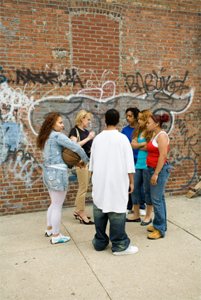August 29, 2011
Doing Something About The Health Of Lower-Income Americans

By Michael D. Shaw
At the most fundamental level, being poor and having poor health are inextricably related. A shortage of sufficient wholesome food, dubious purity of drinking water, and lack of proper sanitation virtually guarantee unsatisfactory health outcomes. While such basic problems are rare in the United States, it is still sadly true that the poorer of us usually also have worse health.
Reports by numerous agencies have found that lower-income Americans and racial and ethnic minorities experience disproportionately higher rates of disease, fewer treatment options, and reduced access to care. There is no shortage of available statistics to tout these findings, and they are most definitely touted—usually for crass political reasons, and much less often to help those affected.
Addressed far less frequently are cultural and ethnic barriers that might be in the way of improving health, and the sad fact that having all the access in the world to our health care system is by no means a panacea. There are far too many examples of wealthy people getting miserably bad health care, and countless cases of how “access to health care” means little more than the opportunity to get over-medicated and over-treated.
A current example is the zeal and methods by which the conventional health care system approaches the so-called epidemic of type 2 diabetes. This form of diabetes is related to obesity, and it is no secret that poor folks and minorities have higher rates of obesity. While inadequately funded community-based organizations are doing what they can to educate people about better diet and exercise habits, the real money and the main focus of “health care” is on glycemic control (maintaining lower blood glucose levels) via various pharmaceutical drugs.
However, there can be big problems with this approach. Last June, the FDA announced that the popular diabetes drug Actos might promote an increased risk of bladder cancer. This disturbing news comes on the heels of Avandia, another diabetes drug, being linked to higher incidence of heart disease. And even for those diabetes pharmaceuticals that don’t seem to have direct side effects, many users fail to improve their lifestyles, thinking that merely taking the drugs will do the trick.
I recently spoke with Annie Barnes—executive director of Sunrise Special Services Foundation, Inc. (SSSF)—to get some details on how community-based organizations can improve the health and the lives of the people they touch. The foundation is based in Lake County, California. Annie has an extensive background in family counseling, community health, and service to minority communities.
SSSF is a 501(c)(3) charitable organization, with the mission to provide advocacy, social services, and funding for some of the most important services which challenge rural areas. SSSF identifies four major components of its activities:
- Housing Stability Project (Helps tenants in need)
- Community Capacity Building (Advocacy, grant writing and assistance in establishing and expanding programs)
- Bridging Victim Services Project (Provides services to Native American crime victims)
- Reach Out (Teaches positive lifestyle habits to families and children)
As a new part of Reach Out, SSSF is launching its “8 to 5” program. Annie explains the name:
We would always hear that people are so busy with their lives, their “8 to 5,” that they don’t have time to care for themselves and improve their own health. This new program instills the idea that your health and wellness also need to be “8 to 5.” For eight weeks, groups of five (friends and family) log onto our website to document their improvements in diet, weight loss, and fitness. This echoes the precepts of Michelle Obama’s “Let’s Move” campaign.
Reach Out uses the Promotores model. The term is shortened from Promotores de Salud, meaning “promoters of health.” Promotores improve the health of their communities by linking their neighbors to health care and social services, by educating their peers about disease and injury prevention, by working to make available services more accessible, and by mobilizing their communities to create positive change.
The 8 to 5 participants are assessed a modest charge to enroll, and each of them gets the book Walk Yourself Thin, a water bottle, and a pedometer. Their records and their successes are used to motivate others.
As Annie says, “It’s always a lot of fun. F-U-N, that’s what we are.” She is working on packaging the 8 to 5 program, so that it can be readily used in communities across the country.
We wish her much success.

